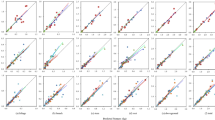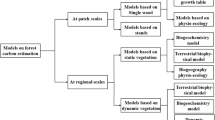Abstract
After the investigation and long-lenn research, the structure, succession, energy flow, nutrient and water cycles, productivity, etc. of Mongolian oak (Quercus mongolica) forest ecosystems are synthetically summarized. The oak, with a simple stand composition, naturally distributes at hilltops, where the soil is and and infertile and lots of tree species can not grow, and stabilizes for a long period for its high adaptive capacity and long longevity, but it will grow better in good sites. Compared with other forest ecosystems in temperate zone, the oak forest has not only more intensive biological cycles of nutrients but higher productivity as well. Among the nine elements determined, the concentrations of Ca and Zn are the highest and lowest, amounting to 41.99% and 0.0015%, respectively. In the vegetation, the largest nutrient pool is root system, making up 47.75%; and the trunk steps the following, 25.13%. Among the main secondary forest types in Maoershan region, the oak stands have not only highest biomass but best biomass structure for in which the biomass of tree stratum reaches 95.6% of the total of the stands and that of trunk does 68.9% of the total of the tree. The oak stands have high stemflow, which amounts to 15.6% of the precipitation and carries a lot of nutrients, and high evapotranspiration, which is as high as 504.1 mm and for which 77.45% of the total radiation (123.3 KJ. cm-2) is consumed as latent heat transfer in the growing reason. The clearculting of the oak stands will result in not only increasing the surface runoff and interflow percentage but also intensifying the loses of N, Ca. Mg and Fe. Finally, it is proposed to pay a great attention to cultivating, rejuvenating and even planting the oak as high yield timber and water conservation forests.
Similar content being viewed by others

References
1964: (3):71–19
1981,(1):1–21
198l:(6):49–59
1982, 6(2):1–20
1991
Author information
Authors and Affiliations
Rights and permissions
About this article
Cite this article
Chuankuan, W., Yunrong, S. & Chunsong, B. Studies on structure and functions of Mongolian oak forests. J. Northeast For. Univ. 6, 65–70 (1995). https://doi.org/10.1007/BF02880636
Issue Date:
DOI: https://doi.org/10.1007/BF02880636



